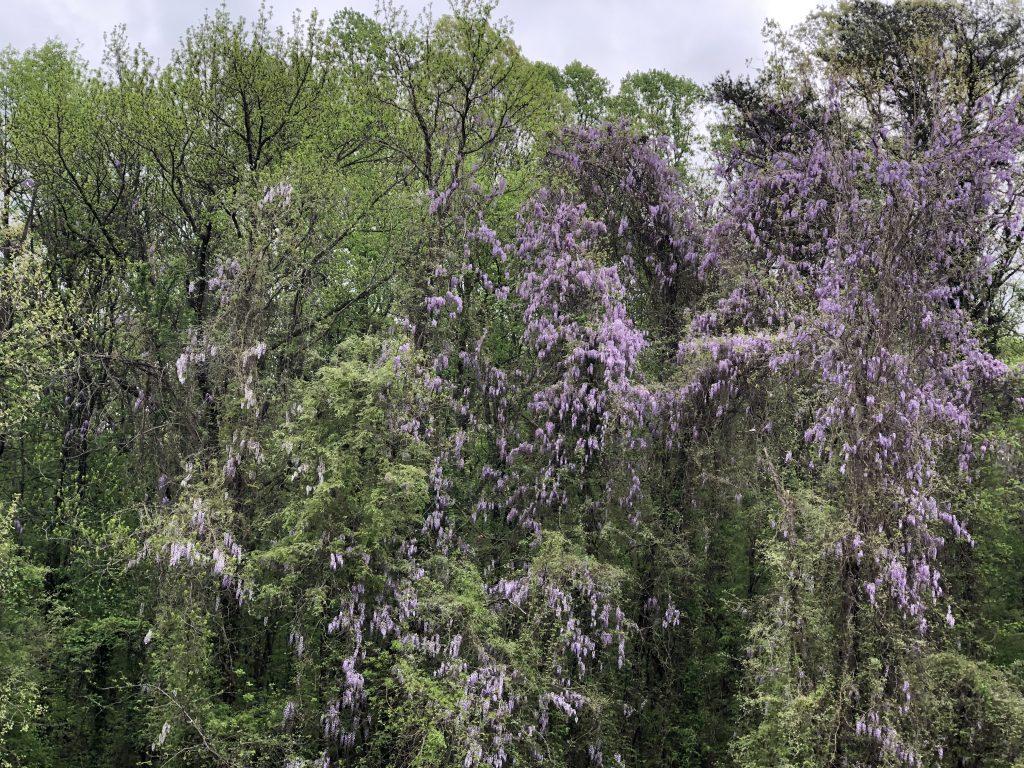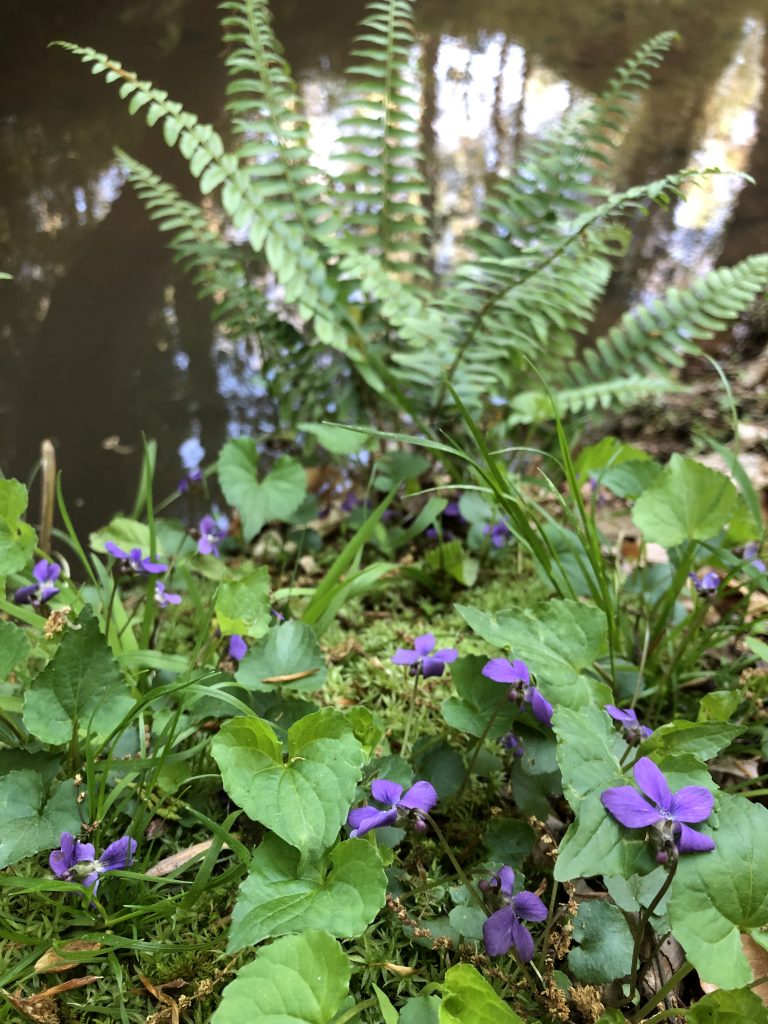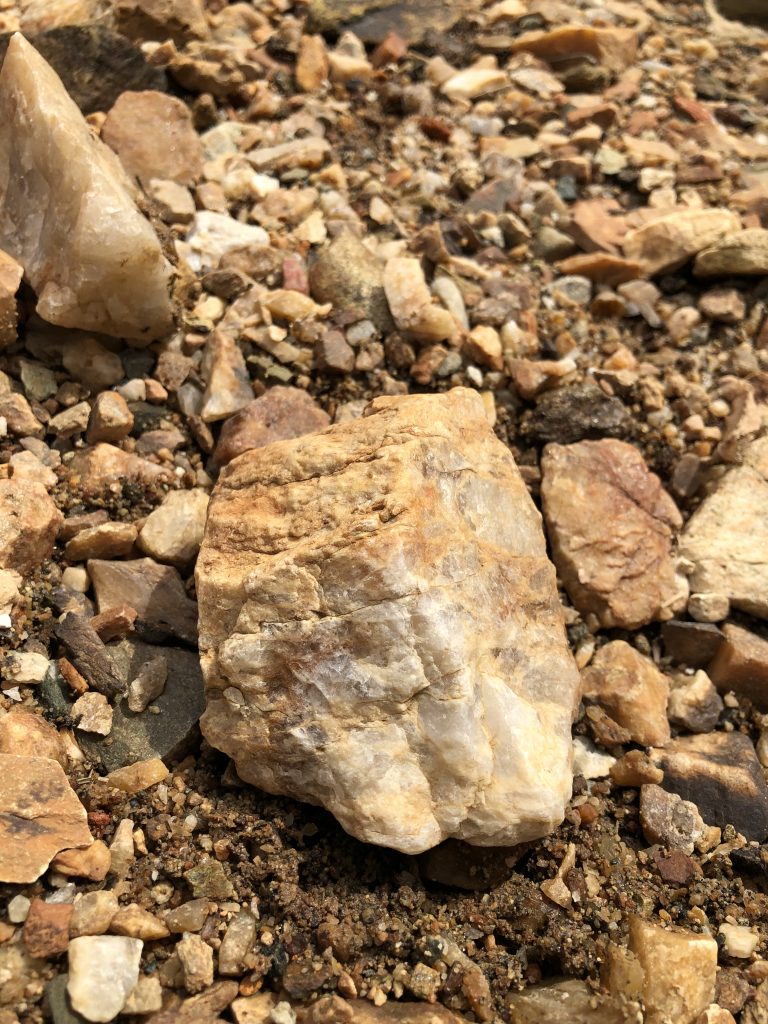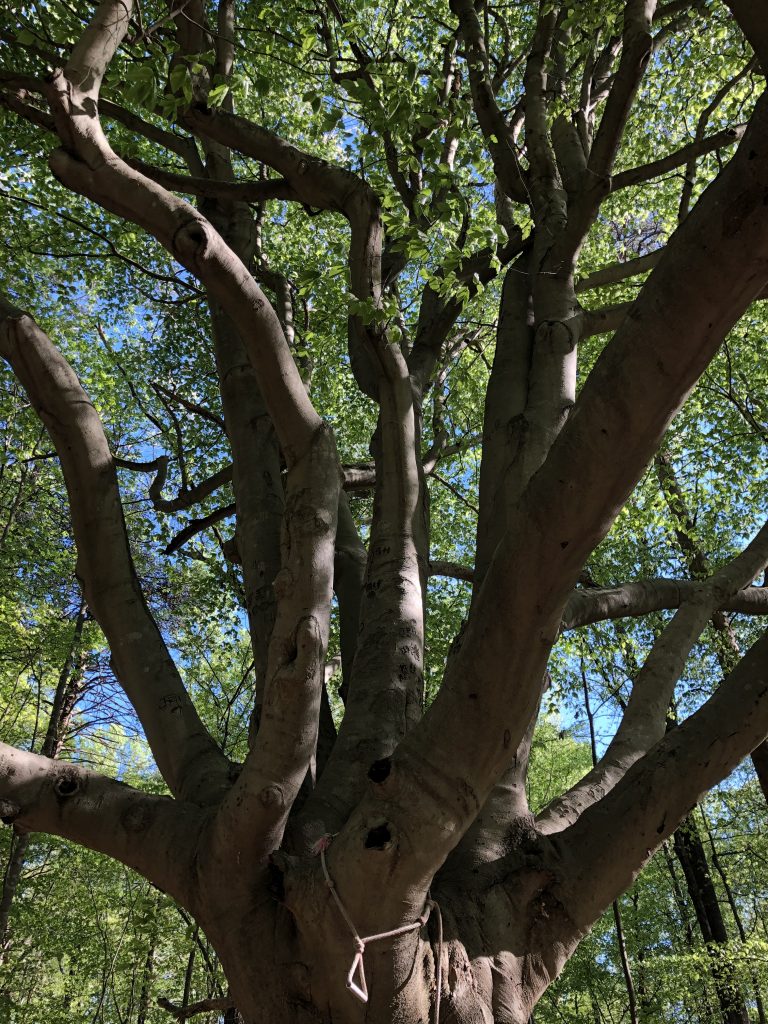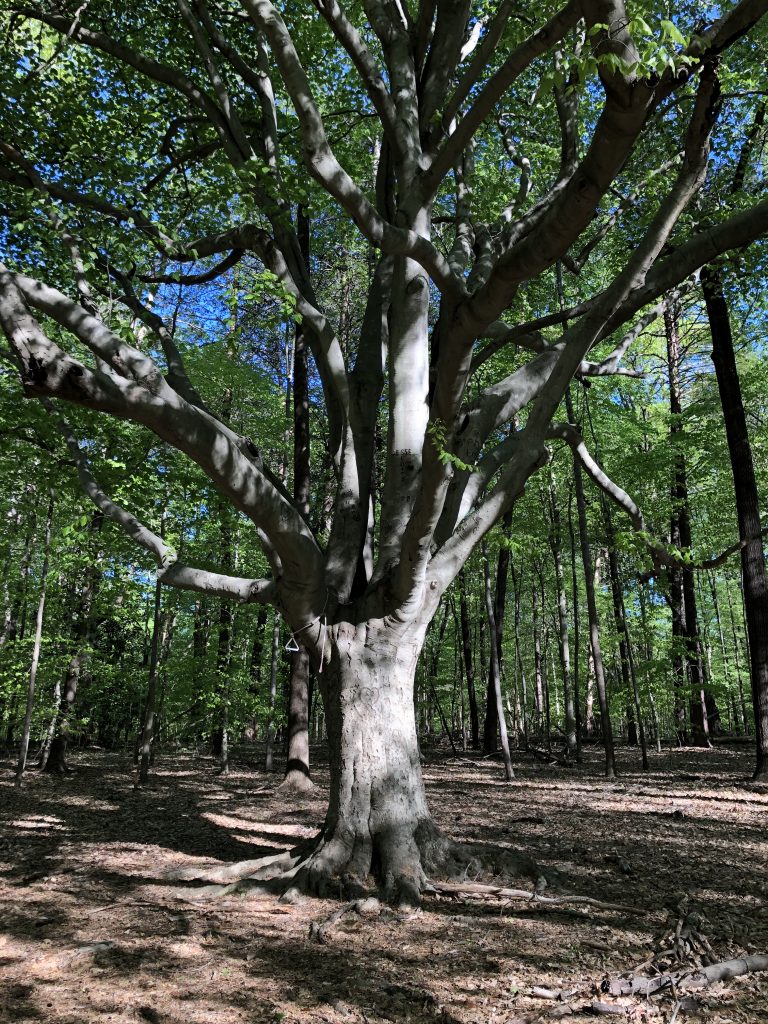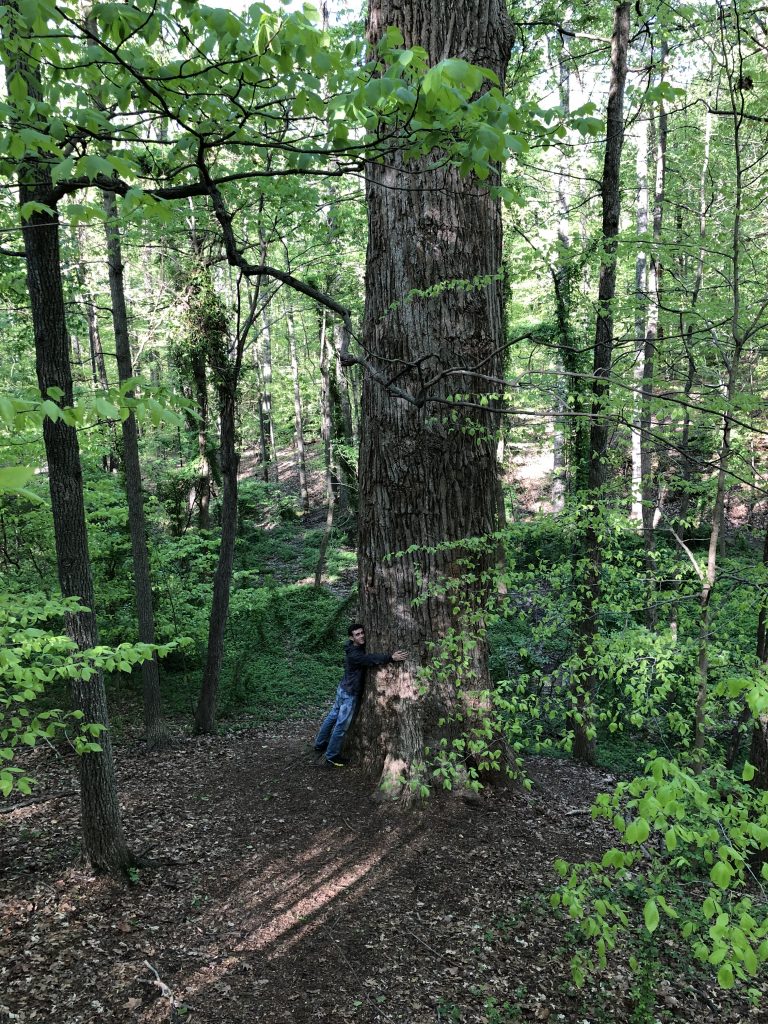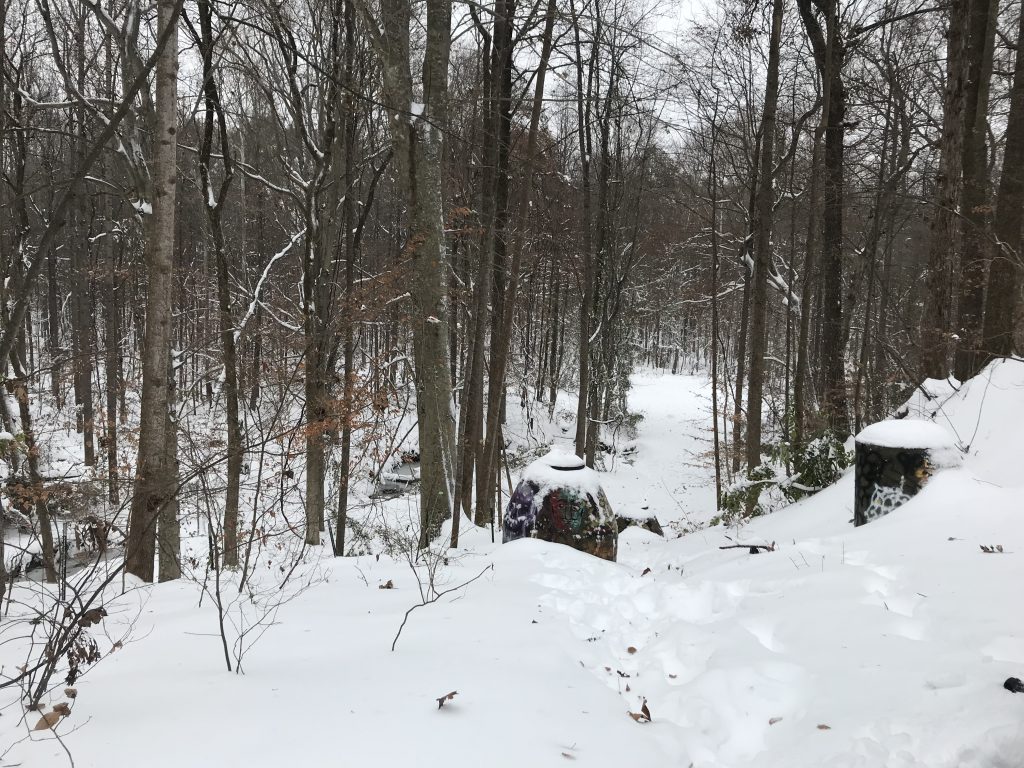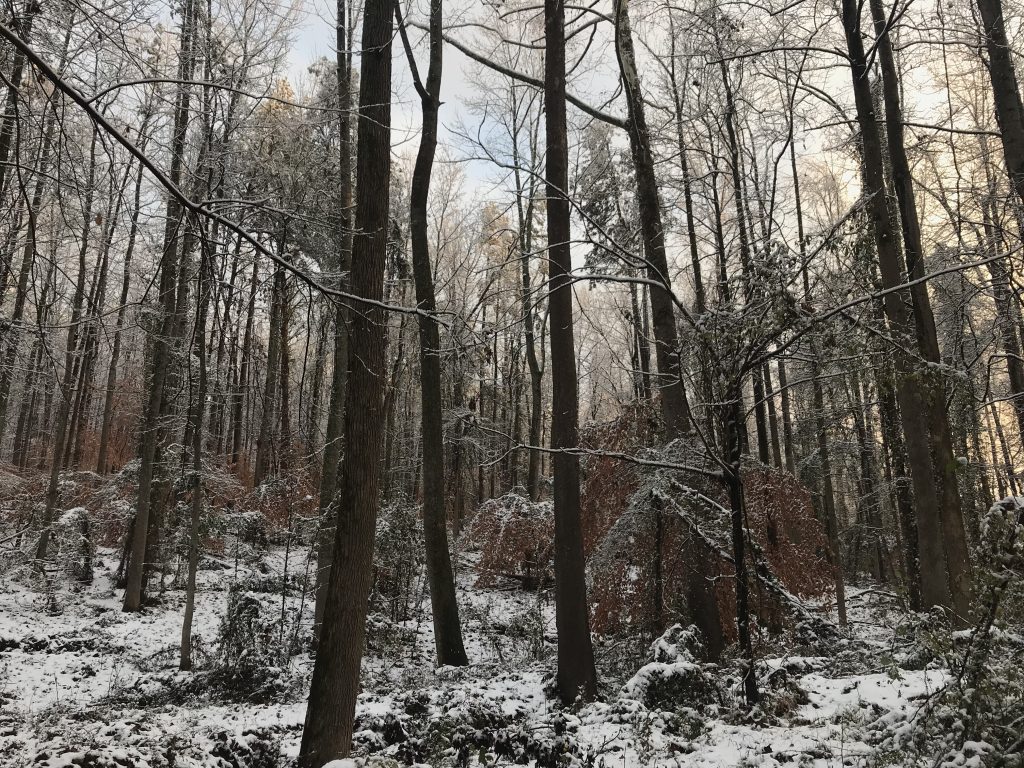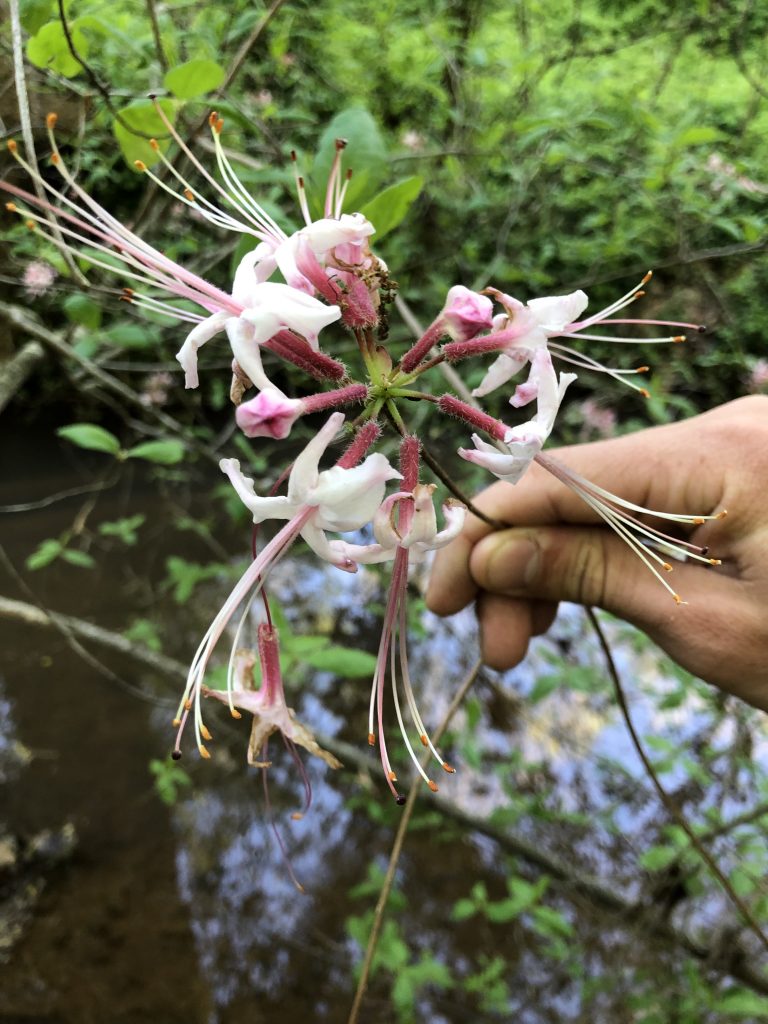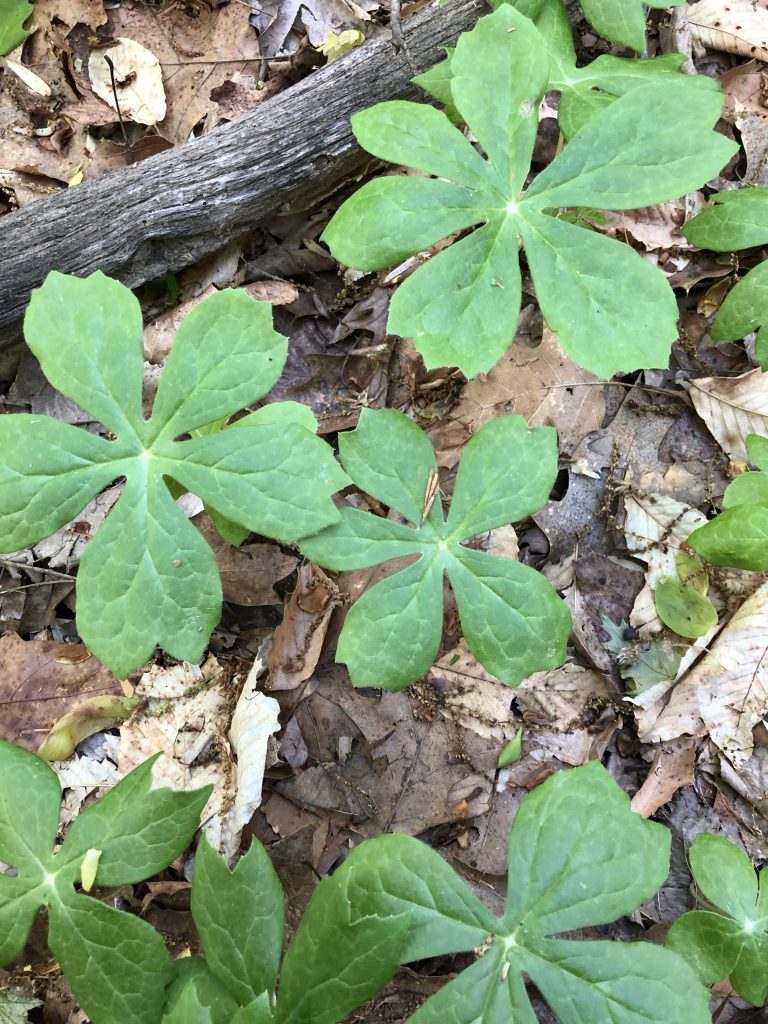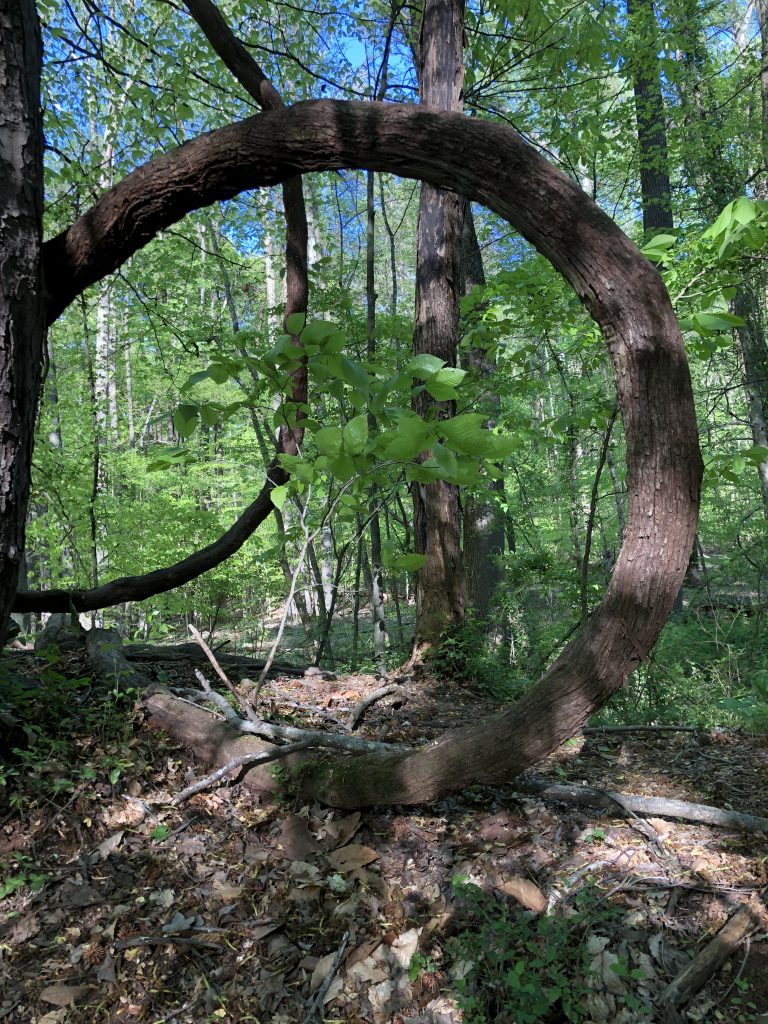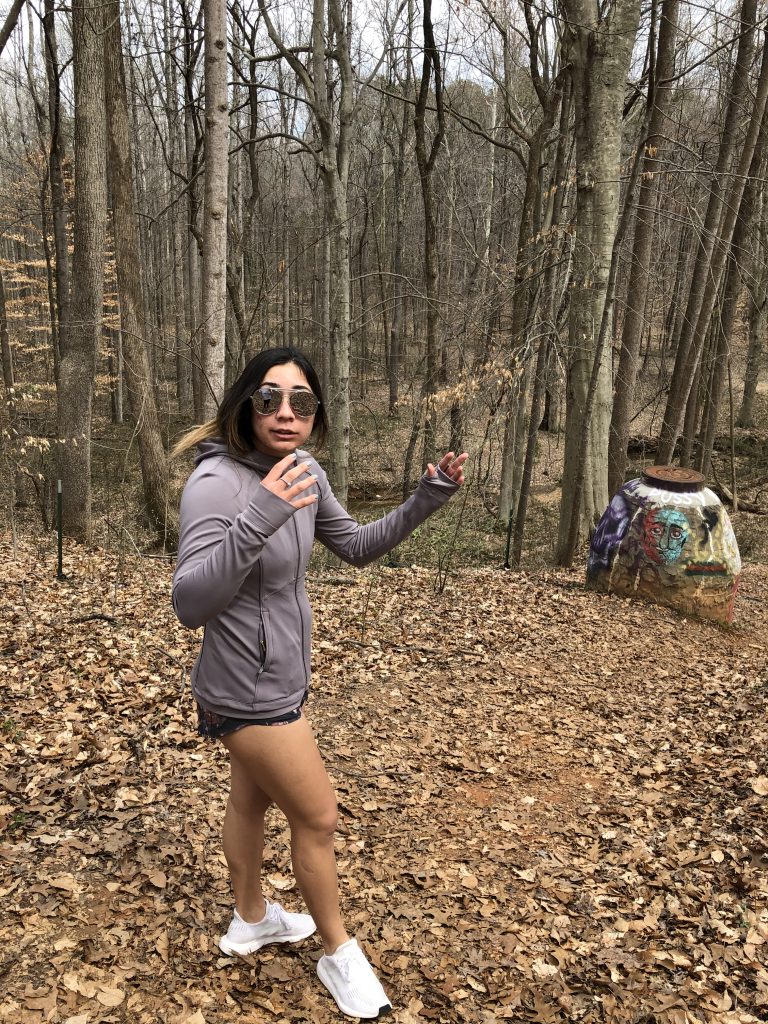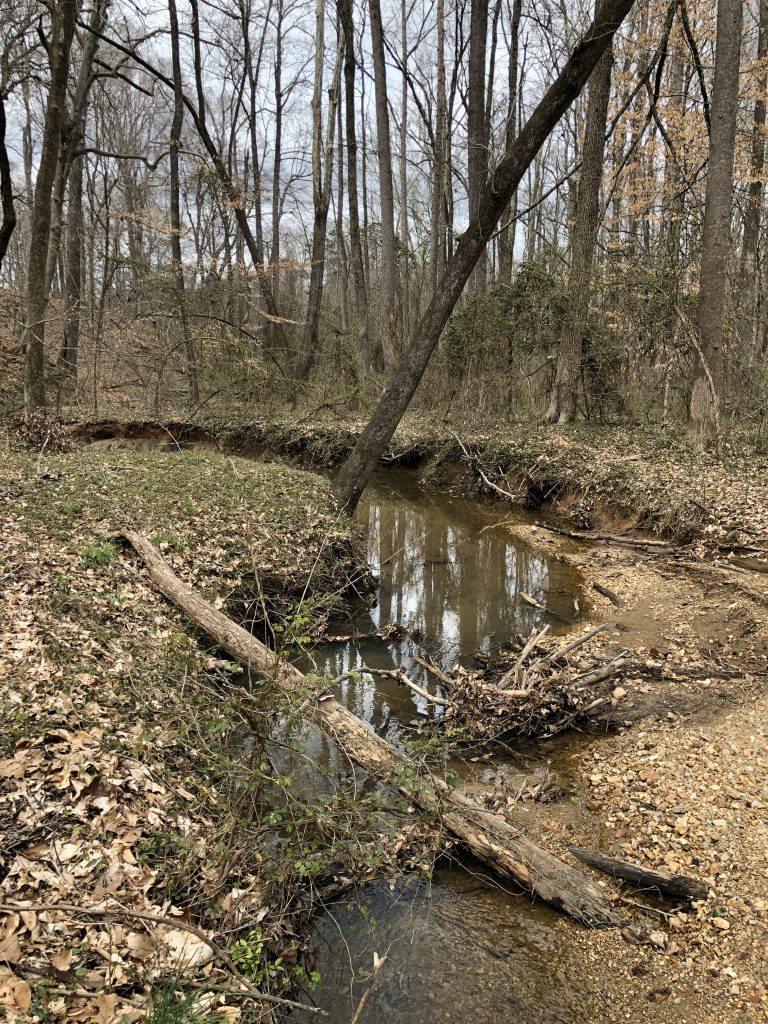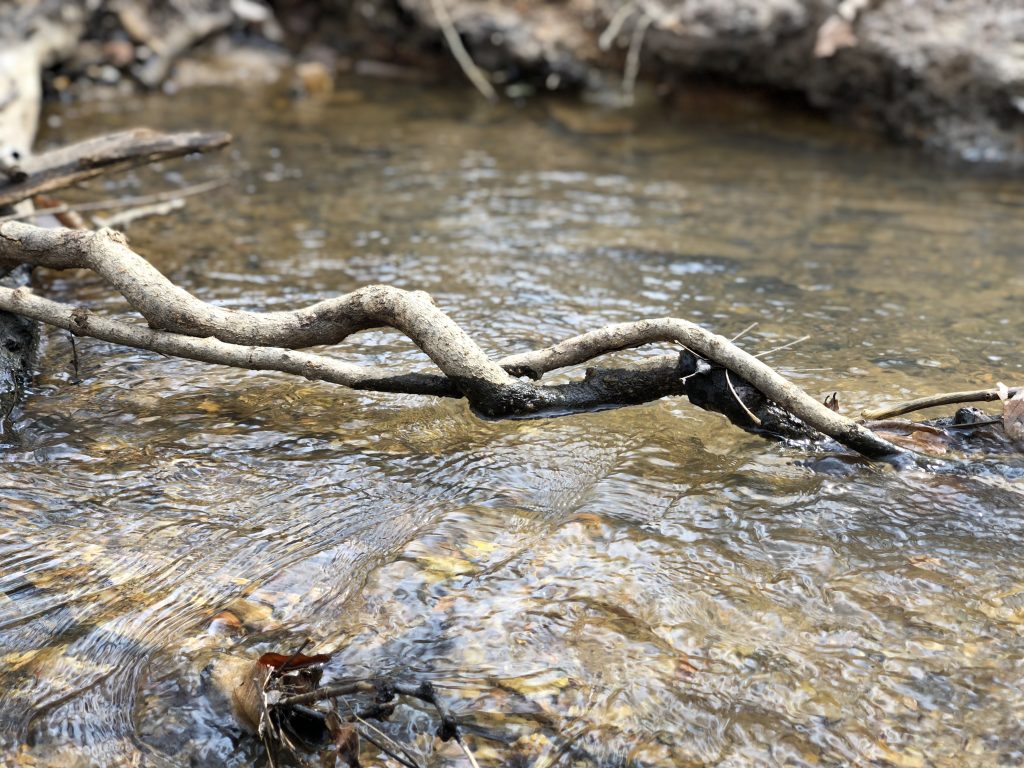Bring a friend. Wandering the woods alone is always an adventure, but when you bring a friend you’re more likely to notice different things and you’re less likely to find yourself lost. Different people have different perspectives and realms of knowledge, so having an extra pair of eyes with you allows you to broaden what you are taking in. whether it be noticing a special plant that you might have missed yourself, or learning a fact about the area you are in, having someone there with you can be greatly beneficial.

Caleb sits at the base of a poplar tree.
Wear proper shoes. What you wear on your feet can make all the difference in your experience with nature. Our woods are hilly in certain parts, and are susceptible to getting washed over with rain. So wearing shoes with good support and good traction is important. Contrary to what I thought on my last walk in the woods, crocs are not good shoes for the day after a rain storm. Being able to climb over branches, trek down steep hills, and through the occasional stream is beneficial when walking through the Guilford woods, as not every path is always clean and dry.
Take different paths. It’s easy to find one route you like and stick to that whenever you want to have some time with nature, but our woods are expansive and offer so many different opportunities. Each path leads you to different areas of the woods and past different species of trees, different slabs of rock, and different things built by the people who have spent time in the woods previously. It’s not uncommon to find art in the woods, whether it be graffiti on the concrete sewer drains, or sculptures made of found items. No matter how much time you spend wandering, you will always find new paths, so you might as well see where they lead.
Don’t swing on or touch the vines that hang from the trees. Everyone has wanted to feel like Tarzan at some point in their life, and finding the perfect vine is always tempting. But the vines that twist and climb their way up the trees in the woods are usually not capable of supporting the weight of a full sized human. Not to mention the fact that there is always the possibility of the vines being poison ivy vines. Even when poison ivy vines don’t have their leaves they are still capable of causing a reaction, so if you’re not sure what something is its always better to stay on the safe side.
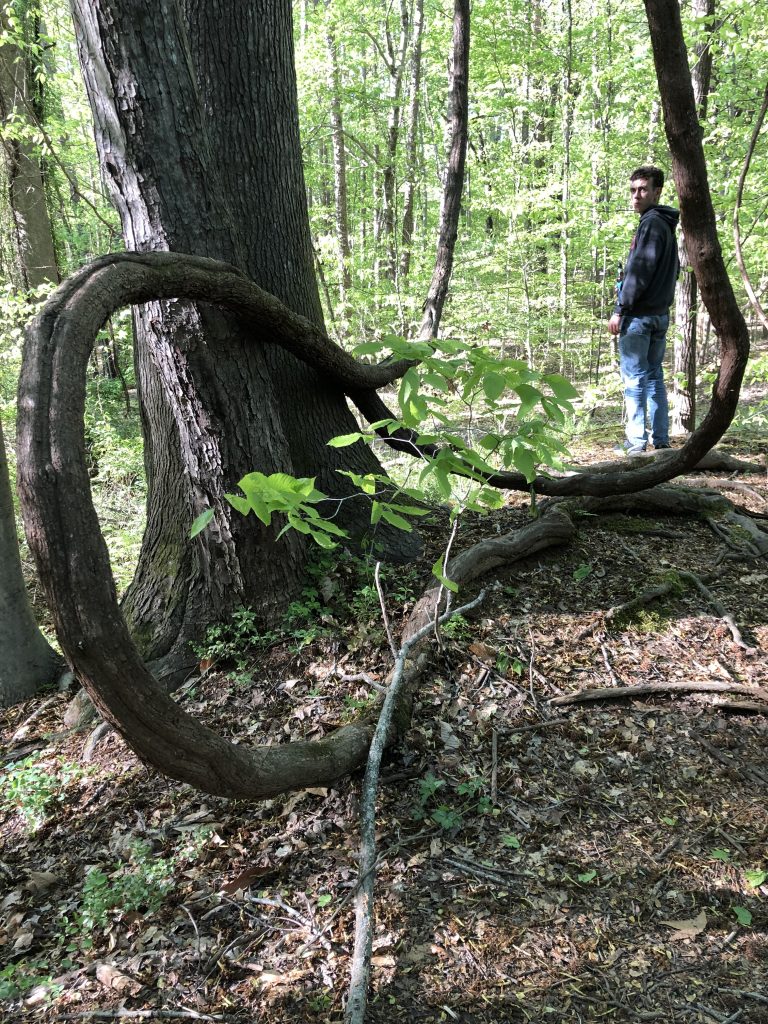
A massive vine winds its way up and around a tree.
Don’t take anything with you or leave anything behind. When walking through the woods you may find something that catches your eye, like a particularly nice rock or a beautiful flower. In these instances, it’s understandable to want to pocket whatever you fin and save it for your personal collection, but as a rule of thumb I say it’s always better to leave things where they are. On the other hand, if you bring anything in to the woods with you it’s extremely important to make sure you leave with whatever you came with. Our woods are already filled with different traces of the students who have spent time in there before, and it’s never fun to find beer bottles or trash on your walks. In keeping this rule in mind, we will be able to better preserve the environment of our landscape.
